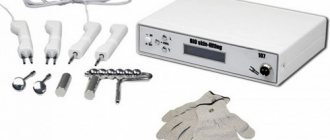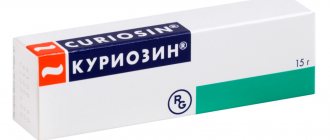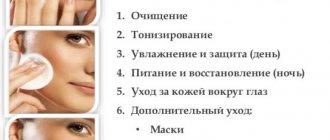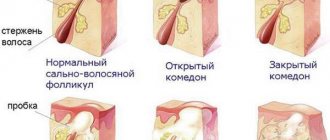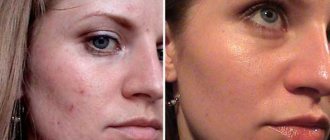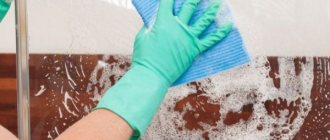Medium facial peeling is a cosmetic procedure to remove the keratinized layer of cells on the skin. The term is of foreign origin, derived from the English peel, meaning “to scrape strongly.” In cosmetology, it is one of the most popular procedures. Classified according to the depth of impact and the drugs used. Medium peeling removes the rough dead layer of cells, allowing the skin to “breathe” and actively renew itself.
Classification of chemical peels: superficial, medium and deep
Chemical peels are classified according to the depth of penetration and the damage to the skin they cause:
- superficial peels penetrate the epidermis to the basal layer;
- Medium peels penetrate to the papillary dermis;
- deep peels penetrate to the level of the reticular dermis.
The peeling solution used for the procedure does not necessarily determine the depth of the peel - it depends on several factors, including:
- solution concentration;
- pH;
- presence or absence of free acid;
- exposure duration;
- skin conditions;
- application method.
For example, a 70% glycolic acid solution can act as a superficial peel (applied for 5 minutes) or a medium peel (applied for 15 minutes). Trichloroacetic acid, depending on the concentration, can be used as a superficial, medium or deep peel.
A separate stage in the evolution of chemical peels was their combined use - the sequential application of various substances, providing a synergistic effect and a lower side effect profile.
Contraindications
Before performing a chemical peel, it is important to ensure that there are no contraindications.
CONTRAINDICATIONS
- pregnancy and breastfeeding;
- allergy or intolerance to the components included in the product;
- severe systemic pathologies;
- inflammation and damage to the skin in the treatment area;
- exacerbation of herpes and the presence of its healing foci;
- hypersensitivity of the skin to ultraviolet radiation;
- fresh tan;
- the use of products that contain retinoids (vitamin A analogues);
- the presence of neoplasms and papillomas;
- intention to carry out eyebrow correction or hair removal in the coming days, as well as carrying out these procedures the day before;
- spring-summer (sunny) period of the year.
If you have sensitive skin, you will most likely be denied this procedure. In this case, peelings are rarely performed at all.
Dermatological surgeon Karin Litani
Preparing the skin for medium and deep chemical peels
Before any chemical peel, including medium or deep, the patient's skin must be properly prepared. The purpose of this preparation is to reduce the likelihood of adverse events such as post-inflammatory hyperpigmentation, provide more effective rejuvenation, and identify potential problems associated with products used during or after the peel procedure. For this use:
- a cleanser or moisturizer with a low concentration of alpha hydroxy acids;
- retinol/isotretinoin and/or a skin lightening agent, for example, hydroquinone, kojic acid, etc.;
- sunscreens that suppress the excitability of melanocytes.
The duration of the skin preparation program is at least 2 weeks before the peeling procedure.
Consequences
Peeling with glycolic acid is one of the safest chemical facial cleansers. But even this procedure may have negative consequences, including:
- 1st or 2nd degree burn - occurs as a result of incorrectly selecting the acid concentration or increasing the duration of the procedure. If you feel severe discomfort and pain, neutralize the acid, apply burn cream and consult a doctor. New peeling procedures can only be performed after the dermis has completely healed.
- Hyperpigmentation - it occurs as a result of high photosensitivity of the skin or due to improper behavior during the rehabilitation period. Before the procedure, be sure to read the contraindications and recommendations of cosmetologists on how to behave after peeling. This will help prevent the formation of age spots.
- An allergic reaction occurs due to improper peeling technology. Before the procedure, be sure to perform an allergy test. If you notice signs of swelling and difficulty breathing, call a doctor immediately. If the reaction is mild, then neutralize the effect of the acid and go to the doctor.
- Increased dryness of the skin - in this case, you need to contact a cosmetologist to prescribe moisturizers.
Medium peelings: indications, features, results
Medium peels are indicated if:
- fine lines and wrinkles associated with photoaging;
- pigmentation disorders;
- superficial atrophic scars.
Traditionally, medium peels use trichloroacetic acid (TCA) in a concentration of 40–60%. This approach is quite effective, but is associated with an increased risk of complications such as scarring and pigmentation. Similar results with less risk can be achieved by using TCA 35% solution in combination with Jessner peel, glycolic acid 70% or carbon dioxide solids.
Before and after Easy TCA peel, Blending Bleaching Cream and DHEA. Photo: SkinTech and AestheticSource
Jessner's solution and trichloroacetic acid 35%
Jessner's solution consists of 14 g salicylic acid, 14 g lactic acid and 14 g resorcinol, diluted with ethanol to 100 ml. Before applying this medium peel, the skin is cleansed and thoroughly wiped with acetone to remove sweat and sebum. In the case of hypertrophic actinic keratosis, curettage can also be performed at this stage.
Peeling is applied to cleansed and oil-free skin using a cotton applicator. After reaching the end point of the procedure - the appearance of white frost and uniform redness of the skin - a cold compress can be applied to the treated area to soothe the skin and relieve discomfort.
Jessner peel provides a keratolytic effect and increases the permeability of the epidermal skin barrier, due to which the TCA solution penetrates the skin more evenly and quickly.
After removing the Jessner peel, an anesthetic such as EMLA or LMX may be applied to the skin to make the TCA peel more comfortable for the patient.
After removal of the topical anesthetic, TCA 35% solution is applied to dry skin. To do this, use a cotton swab or a small gauze pad. After reaching the end point - the appearance of a uniform white frost against the background of erythema - a cold compress is applied to the treated area in order to reduce the burning sensation that the patient feels for about 10 minutes after applying the composition. Then an occlusive ointment, such as Vaseline or Aquaphor, is applied to the skin, which eliminates dryness after peeling.
Before and after Easy Phytic treatment and Purifying Cream. Photo: SkinTech and AestheticSource
Glycolic acid 70% and trichloroacetic acid 35%
This approach provides the same results as the Jessner peel technique, but uses glycolic acid as the initial superficial peel. Glycolic acid has a keratinolytic effect and enhances the penetration of TCA by 35%. As a rule, it is applied for 2 minutes, after which it is neutralized with a bicarbonate solution or cold water. Glycolic acid is not suitable for inflamed or dry skin.
Solid carbon dioxide and TCA 35%
This technique involves using solid carbon dioxide coated with acetone. The substance is applied to the skin to damage the epidermis. The depth of epidermal damage, penetration and effect of the TCA solution depends on the time of exposure to CO2. Thus, areas that require deep peeling (for example, deep wrinkles, scars, thick actinic keratoses) can be exposed to the composition for a longer period of time.
The advantage of this technique is an excellent aesthetic result, but it must be remembered that the results largely depend on the doctor performing the procedure and the application technique.
Mechanism of action of medium peels
The main active ingredient of medium peels – TCA – leads to protein denaturation. Trichloroacetic acid is water soluble and does not easily penetrate into sebum-rich skin. Therefore, the task of preliminary skin preparation and surface peeling, which is applied before TSA, is to thin and increase the permeability of the stratum corneum, as well as remove fat from the skin surface.
This ensures deeper and more uniform penetration, as well as uniform protein denaturation.
The essence of the method
Peeling refers to the exfoliation of epithelial cells. And if the superficial one affects only the stratum corneum, then the middle zone of influence is deeper - right up to the basal layer. That is, almost complete removal of the epidermis occurs, as a result of which cellular regeneration is stimulated.
In the middle and deep layers of the skin, the formation of new vessels, collagen and elastin fibers is activated. The amount of hyaluronic acid, the main moisture-retaining agent of the dermis, also increases. Thanks to this, you can get a number of cosmetic effects:
- Cleansing.
- Lightening.
- Narrowing of pores.
- Relief leveling.
- Increased firmness and elasticity.
Medium peeling has more pronounced anti-aging properties; its implementation allows you to tighten sagging skin, refresh your face and make it more attractive.
Results of using medium peels
Immediately after a midline chemical peel, the skin may feel swollen and tight. Some practitioners recommend regularly (several times a day) applying occlusive ointments to the skin after the procedure, as they shorten the recovery period and reduce skin redness after medium peels.
The epidermis, located above the level of chemical damage, separates from the underlying skin from about the third day, resulting in a serous exudate and crust appearing on the skin. The skin begins to peel off from the perioral area, this process ends on the forehead.
Patients are advised not to pick off the peeling epidermis, as such actions can lead to scarring. In this case, it is allowed to cut off the exfoliated skin with scissors. 5 days after the procedure, you can apply a moisturizer to the skin; the exfoliation process itself can take up to 10 days.
After the epidermal layer is peeled off, patients typically notice that the new skin looks more radiant and its color is more even; the severity of pigmentation and other skin imperfections is noticeably reduced, fine lines and wrinkles are smoothed out. During the process of dermal remodeling, neocollagenesis starts after about 6 weeks, which helps improve skin quality.
Depending on the degree of photodamage and aging, your doctor may recommend repeated peeling procedures for more effective rejuvenation. 3 weeks after the initial peel, the skin can be prepared again for a subsequent procedure.
3 weeks after the first medium peeling procedure, the skin can be prepared again for the next procedure.
Before and after the procedure Easy Phytic, DHEA-Phyto and Re-Nutriv ACE Lipoic Complex. Photo: SkinTech and AestheticSource
Reviews
Below are reviews from people who have used glycolic peeling to improve their skin condition. Check them out to see if this method of improving your appearance is right for you or if it’s better to choose another one.
Angelina, 36 years old
A few years ago I started getting acne. At first, I used various products to deal with the breakouts. Then I started squeezing out pimples, but I was not pleased with the result, as scars appeared on my face. The cosmetologist advised me to use glycolic peeling. After 6 procedures I noticed improvements, my skin became smoother and healthier. Among the disadvantages, I can note the pain of the procedure and its high price.
Victoria, 45 years old
For the last 5 years I have wanted to look younger, but wrinkles prevent me from doing so. First they were around the eyes, then in the lip area. At first I used Relief anti-wrinkle ointment, then I turned to Revitonics. I was not happy with the result, so I decided to undergo a chemical peel with glycolic acid. After just 5 treatments, my face became clearer and younger. I am pleased!
Deep peelings: mechanism of action, implementation, results
TCA is also used as a deep peeling in concentrations above 50%, but the frequency of complications in such cases makes phenol peeling a more attractive alternative.
Mechanism of action of phenol peeling
Like TCA, phenol penetrates the skin and leads to the denaturation and coagulation of proteins at a certain depth in the dermis. Moreover, unlike TCA, phenol penetrates the skin quickly, reaching the reticular dermis layer. Therefore, phenol peels are fast, but it is impossible to control the depth of their penetration as effectively as in the case of TCA.
Phenol deep peels are fast, but it is impossible to control the depth of their penetration as effectively as in the case of TCA.
When using any phenol peeling composition, the result is protein coagulation in the reticular dermis, therefore the indications for the use of deep peels are:
- moderate to deep wrinkles;
- dyschromia;
- post-acne.
Due to epidermolysis, which also affects the papillary dermis, deep peels can achieve better results in eliminating wrinkles and pigmentation than medium peels, which penetrate only to the papillary dermis.
Before and 8 months after melanoma treatment with CosMedix Benefit Peel x3, Timeless Rx Peel x1 and Deep Sea Peel x1. Photo: Medico Beauty
The deep phenol peeling procedure is associated with more risks than the medium peel, because:
- the likelihood of scarring increases due to greater depth of dermal damage, prolonged healing, post-inflammatory hyperpigmentation and hypopigmentation;
- phenol enters the bloodstream and has cardiotoxic effects, thereby increasing the risk of heart failure.
The degree of risk depends on the volume of phenol. If the procedure is carried out on the entire face, the solution is applied alternately in zones. Cardiac monitoring in an appropriate clinical environment is strongly recommended when treating the entire face with phenol.
Phenol peels cause significant discomfort and are therefore sometimes performed under general anesthesia. At a minimum, the patient is sedated before, during, and after the procedure.
Before the procedure, the skin is cleansed and degreased in the same way as before medium peels.
The phenol solution is applied to the skin using folded gauze. After treating one area, the solution is washed off, then proceed to applying it to the next area. The end point of deep peeling is a gray-white frost, consisting mainly of coagulated protein; the disappearance of erythema in the frost area means that the peeling has penetrated deeper than the vascular loops of the papillary dermis.
Results of using deep phenol peels
The recovery period after deep phenol peeling is quite long. For the first 48 hours after the procedure, an occlusive waterproof bandage is applied to the face. At this stage, the skin needs careful care - applying thymol iodide several times a day for a week.
Interesting: Phenol peeling. Features of composition and application
During the first 7 days after the procedure, as a result of mobility of the perioral area, cracks may form in the treated area, so patients are advised to consume liquid food through a straw. Re-epithelialization is observed approximately on the ninth day after deep peeling; during this period, compresses with warm water and softening agents can be carefully applied. Erythematous and swollen new skin after very deep peels can be observed for up to four weeks.
The result of using phenol peels is a noticeable and long-term smoothing of facial wrinkles, elimination of pigmentation and improvement of skin texture.
Before and 10 months after acne treatment with CosMedix Purity Peel x5, Blueberry Jester x2, Timeless Peel x2 and Deep Sea Peel x1. Photo: Medico Beauty
Possible complications after medium and deep chemical peels
While medium chemical peels provide excellent results, there are a number of complications that can occur after using them. Careful patient selection, proper selection of peels, pre-treatment of the skin, and careful monitoring of treatment endpoints reduce the incidence of complications.
- Erythema after midline chemical peels is normal and should resolve within 3-4 weeks. In some cases, redness may persist longer, indicating contact sensitization pre-existing skin disease (rosacea/eczema) or spontaneous penetration of the peel deeper than expected.
- Scarring after midline chemical peels is rare, but may appear several months after the procedure. This complication can be identified by areas of intense and prolonged erythema and induration. In this case, early and appropriate treatment with topical steroids can give good results.
- Herpetic lesions in patients with a history of this disease are quite common. Therefore, it is necessary to carefully study the patient's medical history before the procedure and prescribe prophylactic antiviral therapy to patients at risk. Some practitioners prescribe antiviral medications to all patients who undergo chemical peels.
- Infections after midline chemical peels develop infrequently, and in this case their early identification during the recovery period is very important. Indicators of infection may be: more pronounced than expected, erythema, pustules, pain.
Careful patient selection, proper selection of peels, pre-treatment of the skin, and careful monitoring of treatment endpoints reduce the incidence of complications.
- Permanent hypopigmentation is a complication that most often occurs in people with dark skin types after deep peels. This phenomenon may be associated with other complications, such as infection during the recovery period.
- Post-inflammatory hyperpigmentation, like hypopigmentation, most often occurs after deep peels and in patients with pre-existing pigmentation disorders. This risk can be reduced by properly preparing the skin for the procedure and, if such a complication occurs, hydroquinone 4% is applied to the skin.
The doctor must promptly identify risk factors associated with complications and refuse to perform peels on patients in the following cases:
- smoking;
- poorly controlled diabetes;
- weakened immune system;
- recent skin lifting;
- laser skin resurfacing;
- history of recent or existing herpes simplex virus infections;
- history of hypertrophic and/or keloid scars.
Use of isotretinoin 6 to 12 months before peels is associated with an increased likelihood of scarring.
